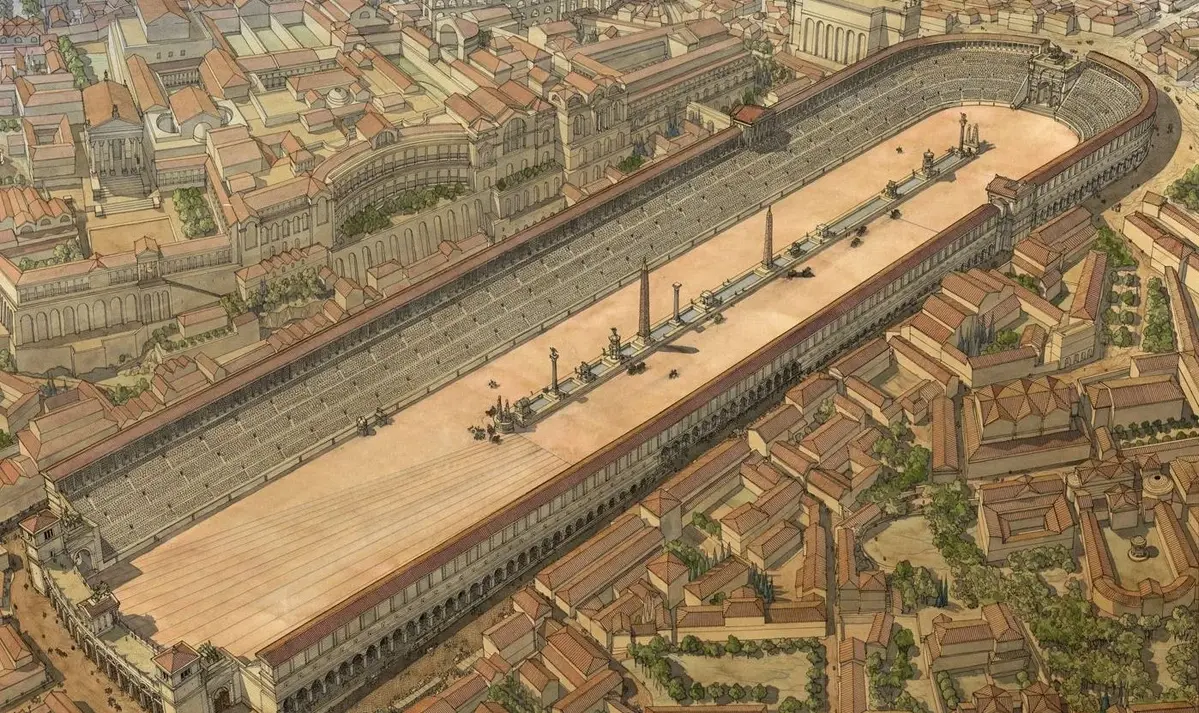 In the city of Kayseri, where a popular open-air market now thrives, there once lay a landfill. Turkish have made a remarkable discovery. Utilizing ancient maps and aerial photographs, researchers uncovered a stunning relic from the Roman period—a hippodrome measuring 450 meters in length, hidden beneath centuries of soil.
In the city of Kayseri, where a popular open-air market now thrives, there once lay a landfill. Turkish have made a remarkable discovery. Utilizing ancient maps and aerial photographs, researchers uncovered a stunning relic from the Roman period—a hippodrome measuring 450 meters in length, hidden beneath centuries of soil.
This is the third known hippodrome of the ancient Romans in Anatolia, following those found in Ephesus and Pergamon, as reported by Arkeonews.
How Did Researchers Stumble Upon This Site?
The research project, initiated by the Kayseri municipality, began with the study of notes and maps from 19th-century travelers. One of these documents, left by Greek scholar Gregorios Bernardakis, marked a mysterious structure referred to as the “Circus.” When experts overlaid this map onto modern aerial images, they noticed a faint oval shape concealed beneath the urban landscape.
Subsequent archaeological geophysical studies confirmed the presence of massive underground foundations that matched the typical layout of a Roman hippodrome: an elongated arena for horse racing.
In the 20th century, this area underwent radical changes. Archival photographs and maps indicated that from 1950 to 1980, it served as Kayseri’s main landfill, accumulating around 20 meters of waste and refuse over that period.

Local historian Mustafa Çingil commented on this fact with a mix of awe and regret: “Once, the municipal authorities used this land as a dump and landfill. As a result, the ancient hippodrome is now buried under tens of thousands of tons of garbage.”
However, ironically, this unintentional burial helped protect the structure from modern development.
A City with Deep Roots
The discovery has sparked interest in the multifaceted history of Kayseri. In the Hellenistic era, the city was known as Mazaka, and during the Cappadocian kings, it was called Eusebia. Under the reign of Emperor Tiberius (14-37 AD), it received the Roman name Caesarea.
The city served as the capital of the province of Cappadocia, its administrative and cultural center. Scholars believe the hippodrome was likely built here at the end of the 1st century BC or the beginning of the 1st century AD, possibly during the reign of King Archelaus, who oversaw Cappadocia’s transition into a client state of Rome.
Today, the hippodrome in Kayseri stands as a reminder that history often lies hidden beneath the mundane.
